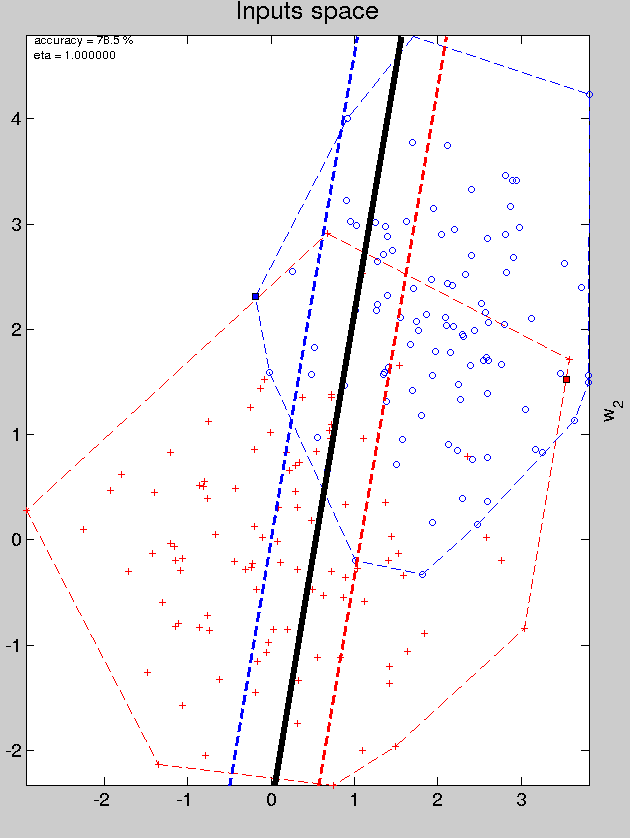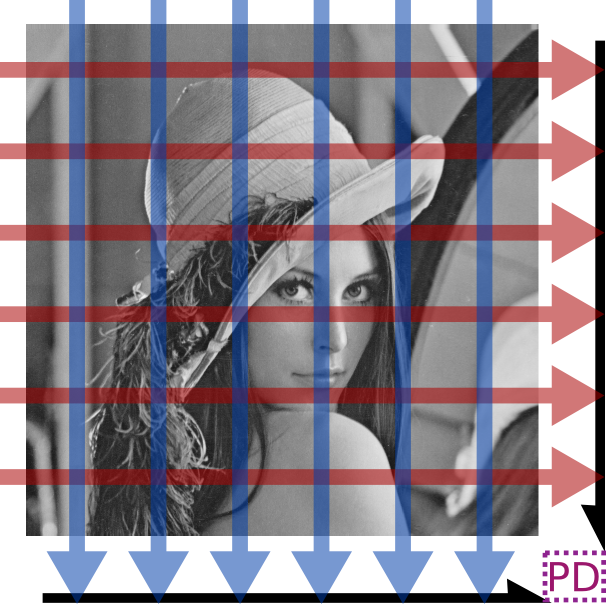Software
Group Fused Lasso
Matlab toolbox for Group Total Variation and Group Fused Lasso. The Group Total Variation (GTV) regularizer is a modification of the Total Variation that uses the l21 norm instead of the l1 one to deal with multidimensional features. Its proximal operator can be used to clean multidimensional signals, such as colour images. Moreover, GTV can be combined with a Group Lasso (GL) regularizer and a squared error term, leading to the Group Fused Lasso (GFL) linear model. For any questions and comments, please email carlos dot alaiz at uam dot es. |
Diffusion Methods
Matlab toolbox for Diffusion Methods. Diffusion methods are nonlinear spectral techniques that are useful for dimensionality reduction and data compression, visualization and analysis while preserving the original information of high dimensional patterns. Among these methods stands out Diffusion Maps for which an implementation is provided on this toolbox.
Additionally this toolbox also provides a function for transforming the data into a new set of homogeneous coordinates by applying Diffusion Maps. It also provides different methods for extending embedding coordinates for out-of-sample data. For any questions and comments, please email a dot fernandez at uam dot es. |
RapMinos
Matlab toolbox for solving the Extended Reduced Convex Hulls Nearest Points Problem (ERCH-NPP) through the RAdially Projected MInimum NOrms Subgradient (RAPMINOS) solver. The ERCP-NPP can be shown to be equivalent to the general Enu-SVM model, which augments the range of acceptable SVM regularization values, thus increasing the capability of the model. While valuable, ERCP-NPP turns out to be a non-convex problem, for which the RAPMINOS algorithm finds a local solution by means of minimum norm subgradients. The algorithm also allows to provide solutions to general lp norm versions of the regularizer, thus increasing further the applicability of the model. Visualization options are also included, allowing to show how the problem is solved step by step in toy problems. For any
questions and comments, please email alvaro dot barbero at
uam dot es. |


|
proxTV
Matlab toolbox of efficient methods for Total-Variation proximity. This package features highly efficient methods for computing the
proximity operators for several variants of the Total-Variation (TV)
regularizer. It includes 1-dimensional, 2-dimensional and N-dimensional
solvers for a generalized lp norm version of this regularizer. It also addresses a weighted version of the classic l1 TV regularization, for 1-dimensional and 2-dimensional data. These
methods are meant to be used as building blocks for global proximal
optimizers, resulting in modular solvers for more models employing TV
regularization. Examples of application for signal and image anisotropic denoising
are provided. For any questions and comments, please email alvaro dot barbero at uam dot es. |
 |
M-LIBSVM
Extended LIBSVM library for Support Vector Machine training. Building over the LIBSVM software,
M-LIBSVM
provides additional features and algorithms for SVM training,
the most relevant being the Momentum Sequential Minimal Optimization
(MSMO) method, which improves the training times of the default
algorithm of LIBSVM. This new algorithm can be combined with LIBSVM
caching and shrinking strategies, though it works best in contexts
where using this strategies is not possible and in large size datasets. Additionally, M-LIBSVM implements as well the Least Squares Support
Vector Machine models for classification and regression, also taking
advantage of the MSMO method. Credit for LIBSVM goes to their original authors. For any questions and comments on the additional features provided by M-LIBSVM, please email alvaro dot barbero at uam dot es. |
QPFS
Software for feature selection in multi-class classification
problems. In QPFS, a quadratic objective function is defined where the quadratic term matrix represents the similarity among variables (redundancy), and the linear term vector measures how correlated each feature is with the target class (relevance). The components of the solution vector represents the weight of each feature. QPFS is C implementation with Fortran embeded. The reference to the paper is: This code is still in development, please email us comments to irene
dot
rodriguez at iic dot uam dot es, and irene dot rodriguez at uam dot es. Free software for non-commercial research use; for all other uses please contact the authors. |
Deep Neural Networks
Matlab toolbox for Deep Neural Networks This is the code for the master thesis of David Díaz Vico, that can be downloaded here. |